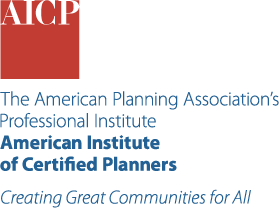Looking for education on this topic?
Check Out Our Passport Courses
Passport is your ticket to the training, experiences, and connections that will take you where you want to go in your planning career. Subscribe for unlimited access for one year to APA's extensive learning library of solution-oriented content facilitated by planners, for planners.
-
Model Ordinance for Providing Reasonable Accommodation Under Federal and State Fair Housing Laws
2003This model ordinance provides a process for making reasonable accommodation in regulating housing for people with disabilities. -
Housing Quotas for People with Disabilities: Legislating Exclusion
Urban Lawyer 43(4): 915–47, 2011by: Daniel MandelkerThis article provides a thorough critique of the legal and rationale justifications for group home separation requirements. -
Can a Group Home be Zoned Out of the Neighborhood?
Coates' Canons (NC Local Government Law Blog), May 12, 2012by: David OwensThis blog post explores the question of where to draw the boundary between a “single family” residence and a “group” residence. -
The Zoning of Group Homes for the Disabled…Zeroing in on a Reasonable Accommodation
Connecticut Public Interest Law Journal, Spring (Symposium Edition) 2003by: Elizabeth LeamonThis article focuses on the legal issues surrounding group homes for recovering addicts. -
It's All About Jobs
PlannersWeb, October 2013by: Stuart Andreason, Jennifer Wallace-BrodeurThis article highlights the role of job creation in attracting young adults to cities. -
What Brings Children to the Park? Analysis and Measurement of the Variables Affecting Children's Use of Parks
Journal of the American Planning Association, 76(1): 89-107, 2010by: Anastasia Loukaitou-Sideris, Athanasios SiderisThis JAPA article analyzes park visitation patterns among middle-school children and finds significant demographic and spatial differences. -
The Importance of Social Connectedness in Building Age-Friendly Communities
Journal of Aging Research, 2012: 1-9, 2012by: Charles Emlet, Joane MoceriThis article shares the results of a community forum about social connectedness in age-friendly communities. -
The Intergenerational Imperative
PM Magazine, March 2019by: Irv KatzThis article highlights the costs associated with increased age segregation and lists the benefits of encouraging intergenerational interactions for youth and older adults. -
Smart Growth = Smart Parenting
PlaceShakers and NewsMakers, June 24, 2011by: Scott DoyonThis blog post emphasizes the role of developers and planners in making communities work for youth. -
Case Study: The Age-Friendly Programme in Portland
2018by: Tine Buffel, Natalie Cotterell, Chris PhillipsonThis case study tracks Portland, Oregon’s progress towards becoming an age-friendly city. -
Modern Roundabouts: A Livability Fact Sheet
2014by: AARP, Walkable and Livable Communities InstituteThis fact sheet aims to help communities embrace modern roundabouts as an age-inclusive transportation intervention. -
A Regional Approach for Age Friendly Communities
January 2018This recorded webinar discusses the Southern New Hampshire Planning Commission’s (SNHPC) age-friendly assessments, which focused on the challenges and opportunities faced by both seniors and millennials. -
Impacts and Opportunities of an Aging Population
February 2011by: Doug Beach, Margaret Reggentin, AICP, Peter Sechler, AICPThis recorded webinar considers the opportunities and challenges of an aging population, including the impact on emergency services and government spending. -
WHO/IFA Webinar 10 - Age-Friendly Housing: Promoting Healthy Spaces for All Ages
February 2019by: Ramona Ludolph, Sybil Boutilier, Luis Berrios NovoaThis recorded webinar explores the relationship between housing and public health and introduces the World Health Organization’s Housing and health guidelines. -
Re Imagining Aging in Community
May 2018by: Mildred Warner, Jana Lynott, AICP, Candace RobinsonThis recorded webinar questions the organizational and financial capacity of current institutions to meet the needs of a growing population of older adults. -
WHO/IFA Web 4 - Ageing 2.0: Improving Experiences for Older People Through Technology and Innovation
August 2017by: Stephen JohnstonThis recorded webinar highlights the role of technology and innovation in creating age-friendly communities. -
WHO/IFA Webinar 9 - Ending Ageism: Toward a World for All Ages
May 2019by: Liat AyalonThis recorded webinar introduces the concept of ageism, its systemic manifestations, and its impact on the human rights of older adults. -
Senior Mobility
August 2012by: Ellen Oettinger, Richard Weiner, Jon KaimanThis recorded webinar shares current transportation trends for meeting the mobility needs of older adults. -
Sustainable Changes to Make Your Community Age-Friendly
April 2015by: Cathy Boyer-Shesol, Kathryn Lawler, Amy St PeterThis recorded webinar features five communities working to implement age-friendly initiatives. -
Healthy Places, Healthy Children
2017by: Belfast Healthy CitiesThis series of training videos introduces teachers in Belfast, Ireland to a resource designed to help children explore the connections between the built environment and health. -
Age-Friendly Municipal Toolkit
July 2017by: Lori Fiegel, Andrea Beahm, Amy HumboldtThis guide connects municipal staff in St. Louis County, Missouri, with the resources necessary to implement the Age-Friendly Community Action Plan. -
Age-Friendly Communities Evaluation Guide: Using Indicators to Measure Progress
December 2015by: Public Health Agency of CanadaThis guide was designed to inform local Canadian governments on how to evaluate age-friendly initiatives. -
A Blueprint for Action: Developing a Livable Community for All Ages
May 2007by: National Association of Area Agencies on Aging, Partners for Livable CommunitiesThis guide is designed to help local leaders collaborate with public and private stakeholders to create an age-friendly community. -
Age-Friendly Built Environments: Opportunities for Local Government
2006by: Australian Local Government AssociationThis guide includes six fact sheets covering several age-friendly issues. -
Active Ageing: A Policy Framework
April 2002by: World Health OrganizationThis guide for policymakers defines active aging and its demographic determinants, discusses seven challenges of aging, and includes three key policy proposals related to health, participation, and security. -
Dementia Friendly Communities Toolkit
2019This toolkit defines what a dementia-friendly community is and guides communities towards becoming dementia-friendly. -
Honolulu, HI, Making Honolulu an Age-Friendly City
Adopted June 2015This functional plan uses six of the WHO’s eight domains of livability to present a vision, current conditions, and goals. -
Seattle, WA, Age Friendly Seattle Action Plan 2018-2021
Adopted 2018This functional plan identifies strategies to reduce racial and social inequality among older adults in each of the WHO’s eight domains of livability. -
Waldo County, ME, Building an Age-Friendly County in Maine
Adopted 2018This functional plan proposes SMART goals addressing transportation, social isolation, and affordable housing. -
Aging in Place: A State Survey of Livability Policies and Practices
2011by: Nicholas Farber, Douglas Shinkle, Jana Lynott, AICPThis report provides a list of state policies related to land use, transportation, and housing that support aging in place. -
Tucson, AZ, Age-Friendly Tucson
Adopted 2019This functional plan highlight’s the city’s strengths and lists the current age-friendly features, activities, and services. -
Compendium of Community Aging Initiatives
March 2010by: Andrew ScharlachThis report compiles summaries of 121 community aging initiatives from across the country. -
Massachusetts ReiMAgine Aging
Adopted January 2019This functional plan helps coordinate and align local and regional efforts to reimagine aging in Massachusetts. -
Aging, Agency, and Attribution of Responsibility: Shifting Public Discourse about Older Adults
2015by: Moira O'Neil, Abigail HaydonThis report analyzes media narratives about aging and proposes communication strategies that may be more productive at increasing age-friendly policies and programs. -
Aging with Dignity & Independence
October 2011by: Kathy Black, Suzanne GregoryThis report investigates the lived experience of older adults in Sarasota County, Florida, with the goal of helping to facilitate aging with dignity and independence. -
Is This a Good Place to Live? Measuring Community Quality of Life for All Ages
April 2014by: Rodney Harrell, Jana Lynott, AICP, Shannon GuzmanThis report discusses AARP’s effort to define, plan for, and measure livability. -
Montclair Township, NJ, Lifelong Montclair
Adopted 2017This functional plan uses the WHO’s eight domains of livability to make several concrete, low-cost age-friendly recommendations. -
Aging in the Pike Peaks Region
April 2015by: Tucker Adams, Cindy DeGroenThis report provides a detailed look at the issue of aging in the Pike Peaks Region of Colorado, consisting of El Paso, Teller, and Park counties. -
Sonoma County, CA, Code of Ordinances
Updated June 2019This regulation belongs to the Age-Friendly Communities and Tiny Houses and Micro-Apartments collections. -
Building Child- and Age-Friendly Communities in Tight Fiscal Times
The Municipal Year Book, 2013by: Mildred Warner, Lydia MorkenThis briefing paper situates the need to plan for demographic change alongside growing fiscal stress in local government. -
Strategies for Increasing Child Care Facilities Development and Financing in California
2007by: Brentt Brown, Maricela Carlos, Carlise KingThis report identifies the challenges and opportunities of the development and financing of childcare facilities in California. -
The Global Network for Age-Friendly Cities and Communities
2018by: Alana Officer, Diane WuThis report shares the progress made by the WHO Global Network for Age-friendly Cities and Communities over the last decade toward creating more age-friendly communities. -
Hamilton Township, NJ, Township Code
Updated June 2019The township’s zoning code establishes a Planned Retirement Development Overlay Zone and a Planned Retirement Development Zone to serve a growing population of older adults. -
Transportation and Family-Friendly Communities
April 2009by: Jinwoo KwonThis briefing paper explores how communities can implement transportation interventions to build more family-friendly communities. -
Reaching Out: Youth and Family Participation
April 2009by: Kevin McaveyThis briefing paper discusses the importance of fostering youth and family participation in the planning process. -
Building Children Out of Our Cities
Shelterforce, January 2016by: Tiffany EngThis article points out the lack of discussion about families in Oakland, California’s A Downtown for Everyone: Shaping the Future of Downtown Oakland. -
Livable Communities
Updated 2019This web page discusses livable communities and provides a list of Resources by n4a and other organizations. -
Village to Village Network
2019This web page introduces the Village model, a volunteer-run age-friendly intervention. -
AARP Research: Livable Communities
Updated 2019This web page contains resources from AARP Research related to Livable Communities. -
District of Columbia, 2006 Comprehensive Plan
Adopted 2006The city's comprehensive plan addresses group housing in the Land Use element.


